Here are spectra of R Mon and V1410 Ori. R Mon was a more difficult target at approximately magnitude 11.8. Located at the tip of the diffuse Hubble’s Variable Nebula, it is a bit hard to put the star on the slit and guide on it. You can see what the target looks like at the tip of the nebula in the attached auto guider image. The spectrum of R Mon shows HeI, many Fe lines, OI and SII emission lines.
The spectrum of V1410 Ori looks very much like the one David posted from 2018-11-21.862.
Woody
Herbig Ae/Be campaign
-
Forrest Sims
- Posts: 86
- Joined: Thu Feb 09, 2017 5:52 pm
-
umberto sollecchia
- Posts: 246
- Joined: Tue Dec 30, 2014 3:25 pm
Re: Herbig Ae/Be campaign
Bonjour, voici ma contribution. Umberto
Comparison
Comparison
-
Robin Leadbeater
- Posts: 1957
- Joined: Mon Sep 26, 2011 4:41 pm
- Contact:
Re: Herbig Ae/Be campaign
Here is an update from Hans-Moritz Guenther on the AAVSO forum
https://www.aavso.org/comment/62466#comment-62466
---------------------------------------------------------------------------------------------
Status of the X-ray observations
Dear optical observers,
thank so so much for sending me spectra. I wanted to update you where we
are in the Chandra data taking and let you know what the next steps for
this project are.
Three of the five stars in our Chandra program were already successfully
observed (V346 Ori split over two Chandra orbits on 2018-11-25 and
2018-12-28; HD 250550 = V1307 Ori on 2018-11-29; HD 190073 = V1295 Aql
on 2018-12-01). The remaining two are scheduled just around Christmas
(the week starting 2018-12-17).
Thanks to you, we now have optical spectra from all of them. I you get a
chance to observe the remaining two again close to the Chandra
observation, that would be great, but even if not, the spectra you
already send me are very valuable.
We know that the accretion rate in HAeBe stars changes all the time, but
the range seen within a day or within a few days is typically small; on
the other hand, the rate today might be significantly different from
what is was in e.g. 2015. That's why we asked for your help to get a
spectrum within a week or so of the Chandra observation. We can estimate
this rate from the equivalent width of Halpha and I had planned to send
you the numbers I get from your spectra as soon as I have them. It's not
hard to calculate, but I'm going on vacation in a few days and there are
several other things I need to get done before I go (both in astronomy
and in private live, e.g. last week the hot water heater in my home
broke and getting that fixed seemed more urgent to me than calculating
the mass accretion rate of V346 Ori).
I have not yet seen the X-ray data, but we typically wait until all
stars of the program are observed before we really get into the details.
Christian Schneider is the principal investigator
for the Chandra observing program. We'll talk about the results when all
the data is in.
As I said above, it would be great if you get a chance to take a
spectrum of the yet to be observed stars close to Chandra's date. Since
I'll be on vacation, I don't know if I get a chance to post the dates here, but you can always check the Chandra schedule of the
next two weeks here: http://asc.harvard.edu/target_lists/stscheds/index.html
or search for a specific target in this form:
https://cda.harvard.edu/chaser/ (put in "target name", then click
"resolve target", then "search: on the top left).
As for the optical data, when I return from my Christmas vacation, I
will plot and compare all the spectra you send me, get the H alpha
equivalent width, correct that number for the equivalent width that a
non-accretion star for the same spectral type would have, and estimate
the mass accretion rate. For those stars, where I have more than one
spectrum from you, I'll check how much variability there is. Once Christian has had a
chance to look at the X-ray data, and any optical photometry we will
start to compare these stars to other previously observed objects and
see if accretion changes the X-ray emission from Herbige AeBe stars
(that's the goal of this campaign).
Again, thanks a lot for you help. Without you it would have been
difficult for us to learn about the state of the accretion at (almost)
the same time that we look at the X-ray emission with Chandra.
Yours,
Moritz
https://www.aavso.org/comment/62466#comment-62466
---------------------------------------------------------------------------------------------
Status of the X-ray observations
Dear optical observers,
thank so so much for sending me spectra. I wanted to update you where we
are in the Chandra data taking and let you know what the next steps for
this project are.
Three of the five stars in our Chandra program were already successfully
observed (V346 Ori split over two Chandra orbits on 2018-11-25 and
2018-12-28; HD 250550 = V1307 Ori on 2018-11-29; HD 190073 = V1295 Aql
on 2018-12-01). The remaining two are scheduled just around Christmas
(the week starting 2018-12-17).
Thanks to you, we now have optical spectra from all of them. I you get a
chance to observe the remaining two again close to the Chandra
observation, that would be great, but even if not, the spectra you
already send me are very valuable.
We know that the accretion rate in HAeBe stars changes all the time, but
the range seen within a day or within a few days is typically small; on
the other hand, the rate today might be significantly different from
what is was in e.g. 2015. That's why we asked for your help to get a
spectrum within a week or so of the Chandra observation. We can estimate
this rate from the equivalent width of Halpha and I had planned to send
you the numbers I get from your spectra as soon as I have them. It's not
hard to calculate, but I'm going on vacation in a few days and there are
several other things I need to get done before I go (both in astronomy
and in private live, e.g. last week the hot water heater in my home
broke and getting that fixed seemed more urgent to me than calculating
the mass accretion rate of V346 Ori).
I have not yet seen the X-ray data, but we typically wait until all
stars of the program are observed before we really get into the details.
Christian Schneider is the principal investigator
for the Chandra observing program. We'll talk about the results when all
the data is in.
As I said above, it would be great if you get a chance to take a
spectrum of the yet to be observed stars close to Chandra's date. Since
I'll be on vacation, I don't know if I get a chance to post the dates here, but you can always check the Chandra schedule of the
next two weeks here: http://asc.harvard.edu/target_lists/stscheds/index.html
or search for a specific target in this form:
https://cda.harvard.edu/chaser/ (put in "target name", then click
"resolve target", then "search: on the top left).
As for the optical data, when I return from my Christmas vacation, I
will plot and compare all the spectra you send me, get the H alpha
equivalent width, correct that number for the equivalent width that a
non-accretion star for the same spectral type would have, and estimate
the mass accretion rate. For those stars, where I have more than one
spectrum from you, I'll check how much variability there is. Once Christian has had a
chance to look at the X-ray data, and any optical photometry we will
start to compare these stars to other previously observed objects and
see if accretion changes the X-ray emission from Herbige AeBe stars
(that's the goal of this campaign).
Again, thanks a lot for you help. Without you it would have been
difficult for us to learn about the state of the accretion at (almost)
the same time that we look at the X-ray emission with Chandra.
Yours,
Moritz
LHIRES III #29 ATIK314 ALPY 600/200 ATIK428 Star Analyser 100/200 C11 EQ6
http://www.threehillsobservatory.co.uk
http://www.threehillsobservatory.co.uk
-
umberto sollecchia
- Posts: 246
- Joined: Tue Dec 30, 2014 3:25 pm
Re: Herbig Ae/Be campaign
Bonsoir, je poste d'autres profils de mes observations de l'étoile 1410 ori.
Umberto
Umberto
-
James Foster
- Posts: 455
- Joined: Sun Jan 24, 2016 7:14 am
Re: Herbig Ae/Be campaign
Here are some spectra I've taken of 3 of these Herbig Ae/Be objects (Alpy600/LISA, & LhiresIII):
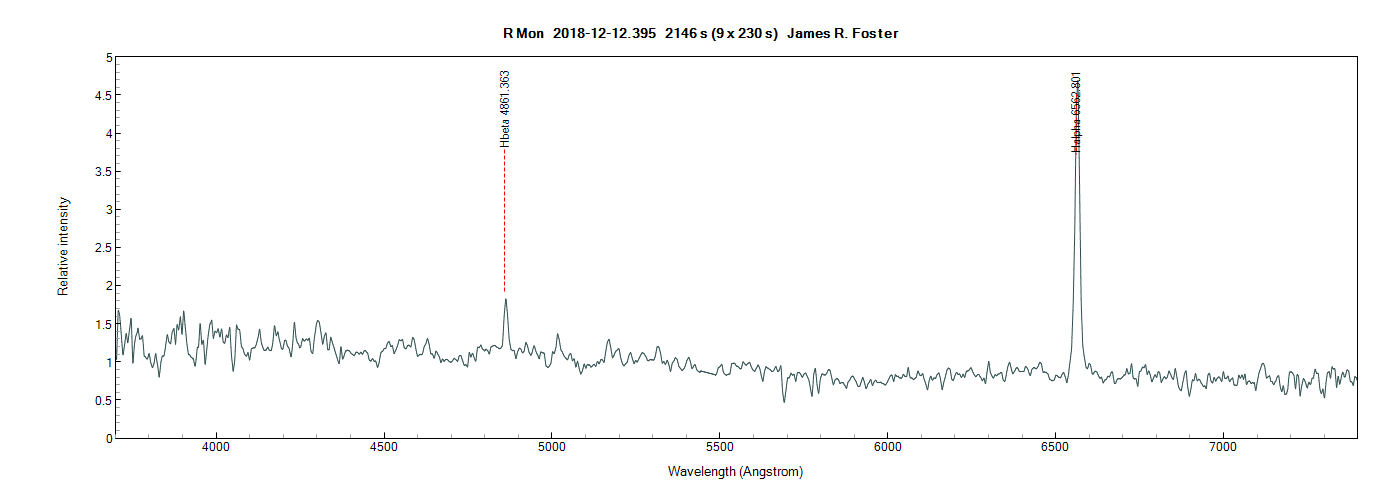
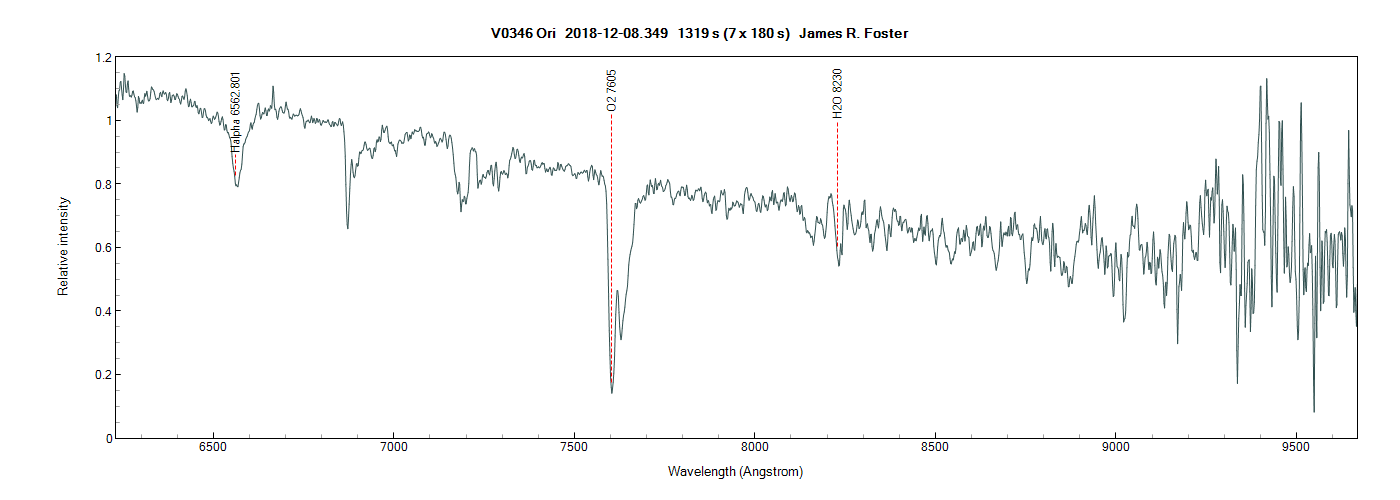
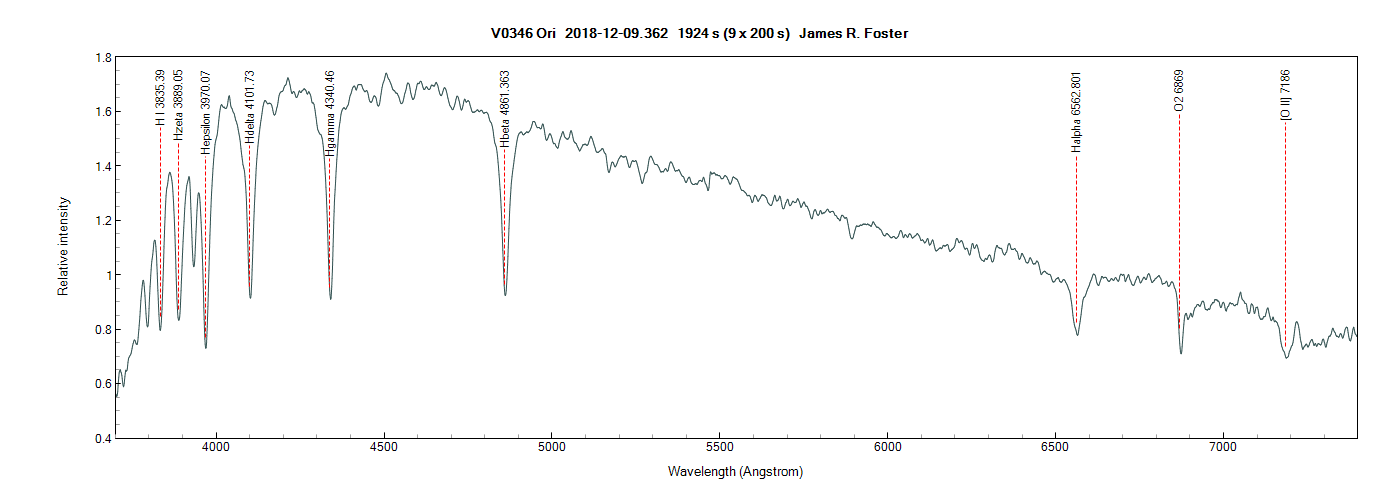
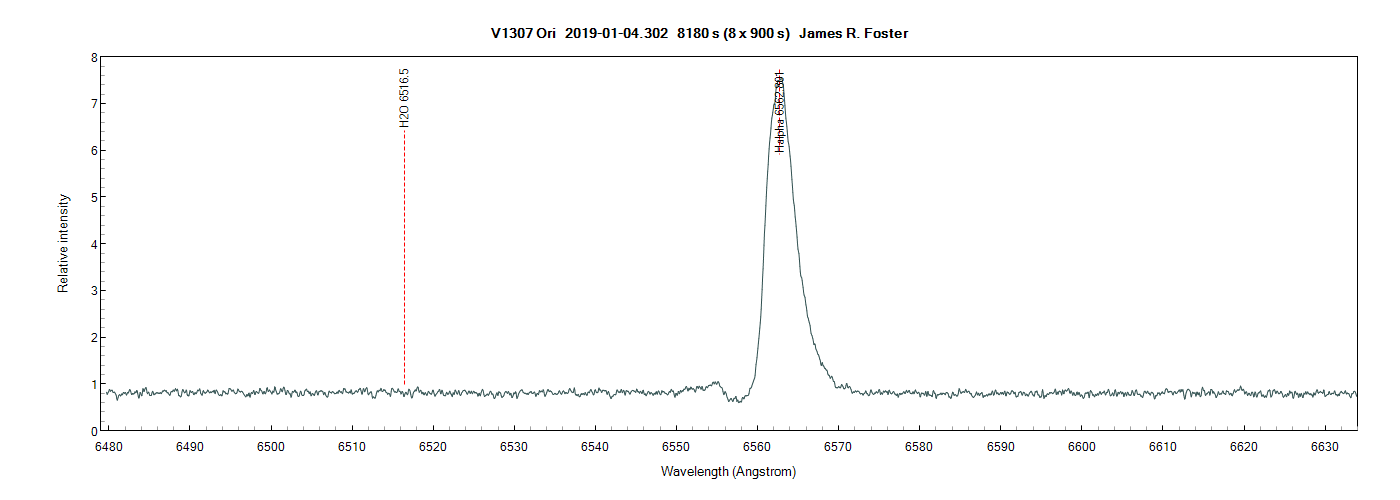
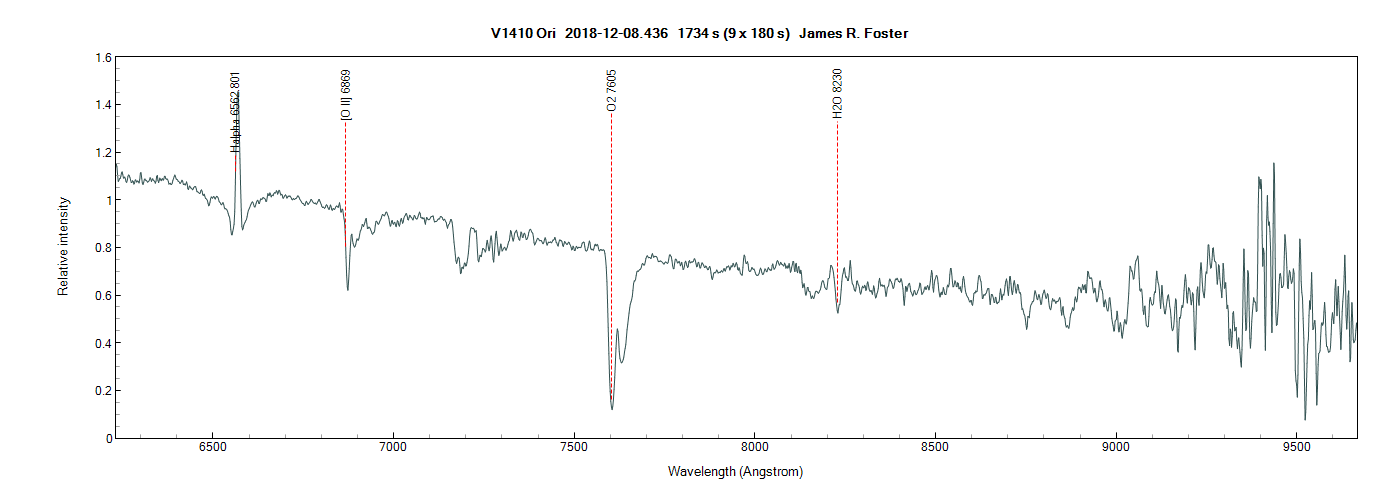
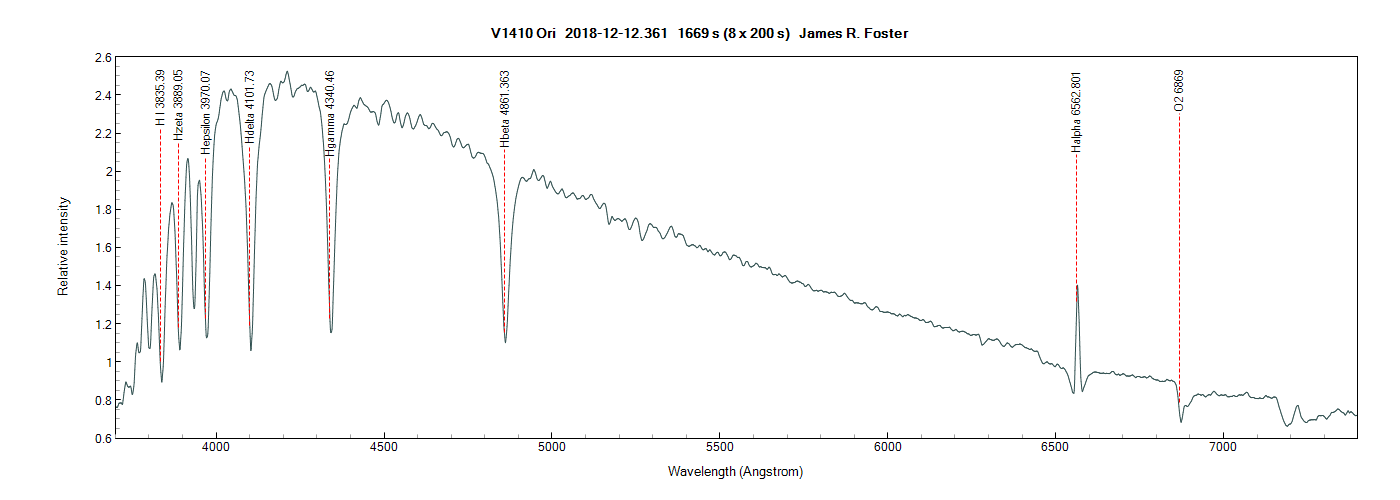
James






James
James Foster
eShel2-Zwo ASI2600MM Pro
Lhires III (2400/1800/600 ln/mm Grat) Spectroscope
LISA IR/Visual Spectroscope (IR Configured)
Alpy 200/600 with Guide/Calibration modules and Photometric slit
Star Analyzer 200
eShel2-Zwo ASI2600MM Pro
Lhires III (2400/1800/600 ln/mm Grat) Spectroscope
LISA IR/Visual Spectroscope (IR Configured)
Alpy 200/600 with Guide/Calibration modules and Photometric slit
Star Analyzer 200